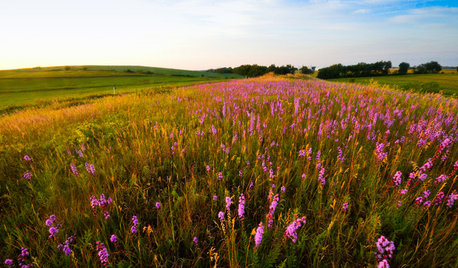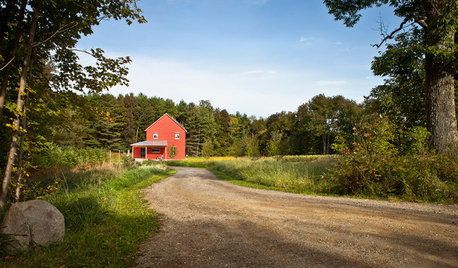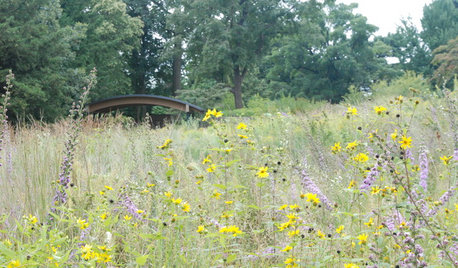How do Monarchs find Milkweed?
almatt
14 years ago
Featured Answer
Sort by:Oldest
Comments (24)
fighting8r
14 years agoRelated Discussions
Plant Milkweed for Monarch Butterflies
Comments (7)There is a patch of anise or fennel weed that reseeds every year in the lot behind our house. It seems to attract butterfly habitat, but not sure about milkweed. However, about 5 years ago, we awoke one morning - and going outside, found ourselves in the midst of a huge Monarch migration. What a sight, they just kept on coming, and seemed to be from the ocean. It looked as though they were headed for a huge growth of wild mustard - down in the canyon behind our house. We have lived here over 30 years, and that was the first one we had seen. Fantastic! We see swallowtail, mourning cloaks, a few monarchs every year, but that migration was a once-in-a-lifetime event, I'm afraid. Bejay...See MoreMilkweeds n NO Monarchs
Comments (12)I got milkweed and I got seed pods about to burst, so more milkweed on the way, I guess. I've been smushing those big black and yellow ladybug-shaped beetles because they eat my tropical milkweed faster than the cats can. I've got something folding and rolling the leaves of the willow tree. I don't want to unfold the leaves to see what it is, yet. These blasted red wasps are more numerous this year than I can recall them ever being and they will take a caterpillar real quick. If the little ones can hide successfully, who am I to expose them to certain death?...See MoreLocation on monarch eggs on milkweed
Comments (4)Yes, I was asking about the "higher" leaves on the plant; all the eggs I've ever found have been on the underside. Thanks for the replies. Perhaps I find them more on "higher" leaves because the milkweeds in the fields near us are in grass that is 3' high, so the mommas may just be using what's most easily accessible. Conversely, the BSTs that oviposit on our garden fennel and dill seem to prefer the lower-down areas of the plant, but that's probably just a chance observation too. Thanks to all. stan...See MoreMonarchs, Milkweed - How do you have enough??
Comments (5)You only have enough milkweed when your supply = demand. Since you're in Zone 9 it's like the milkweed cafeteria is always open so you need to plant as much as your landscape can hold. Usually predators keep things in check, but if they're in short supply, you'll need to keep increasing your number of plants until you have enough. I may have 150 plants, and my neighbors have plants also so there is generally no supply problem in Missouri....See Moretdogmom
14 years agolarry_gene
14 years agosusanlynne48
14 years agoericwi
14 years agobandjzmom
14 years agoJillberto
14 years agosergeantcuff
14 years agoMary Leek
14 years agolarry_gene
14 years agoericwi
14 years agosergeantcuff
14 years agoalmatt
14 years agosunburned
13 years agoKC Clark - Zone 2012-6a OH
13 years agoonafixedincome
13 years agoTony G
13 years agolinda_tx8
13 years agoonafixedincome
13 years agoTony G
13 years agobananasinohio
13 years agowifey2mikey
13 years agoHU-158980913
4 years ago
Related Stories

FLOWERS AND PLANTSHelp Monarchs and Other Butterflies by Planting Common Milkweed
Summer-blooming Asclepias syriaca is an important larval host plant for the monarch butterfly and attracts a number of pollinating insects
Full Story
GARDENING GUIDESGreat Design Plant: Milkweed
Quit cringing. This not-weed plant is a sight to behold in the garden, has a delicious vanilla scent and is a magnet for butterflies
Full Story
GARDENING GUIDESGreat Design Plant: Butterfly Milkweed, a Beacon in the Prairie
Vivacious orange flowers for you, nectar for the butterflies and bees. Asclepias tuberosa is worth planting for more reasons than one
Full Story
CALIFORNIA NATIVE PLANTSGreat Design Plant: Asclepias Is Attractive to Monarch Butterflies
Increase monarch butterfly populations in California by planting stunning native milkweeds
Full Story
GARDENING FOR BUTTERFLIESBe a Butterfly Savior — Garden for the Monarchs
Keep hope, beauty and kindness alive in the landscape by providing a refuge for these threatened enchanters
Full Story
GARDENING GUIDESHelp Fuel the Monarch Migration With These 6 Prairie Plants
Try these nectar-rich beauties and help autumn monarchs
Full Story
FALL GARDENINGWhat Monarch Butterflies Taught Me About Garden Design
Thinking like a butterfly leads to fresh perspectives in the garden and in life
Full Story
GARDENING GUIDESHow to Find the Right Native Plants for Your Yard
Find plant maps, sale sites and guides that make going native in the garden easier than ever
Full Story
THE ART OF ARCHITECTUREFinding the Perfect Home for a New House
Sun, soil, water, topography and more offer important cues to siting your house on the land
Full Story
GARDENING GUIDESHow to Find the Right Plants for Your Garden
Break free from choosing plants by cold-hardiness zones for a beautiful landscape that thrives year-round
Full Story


Mary Leek